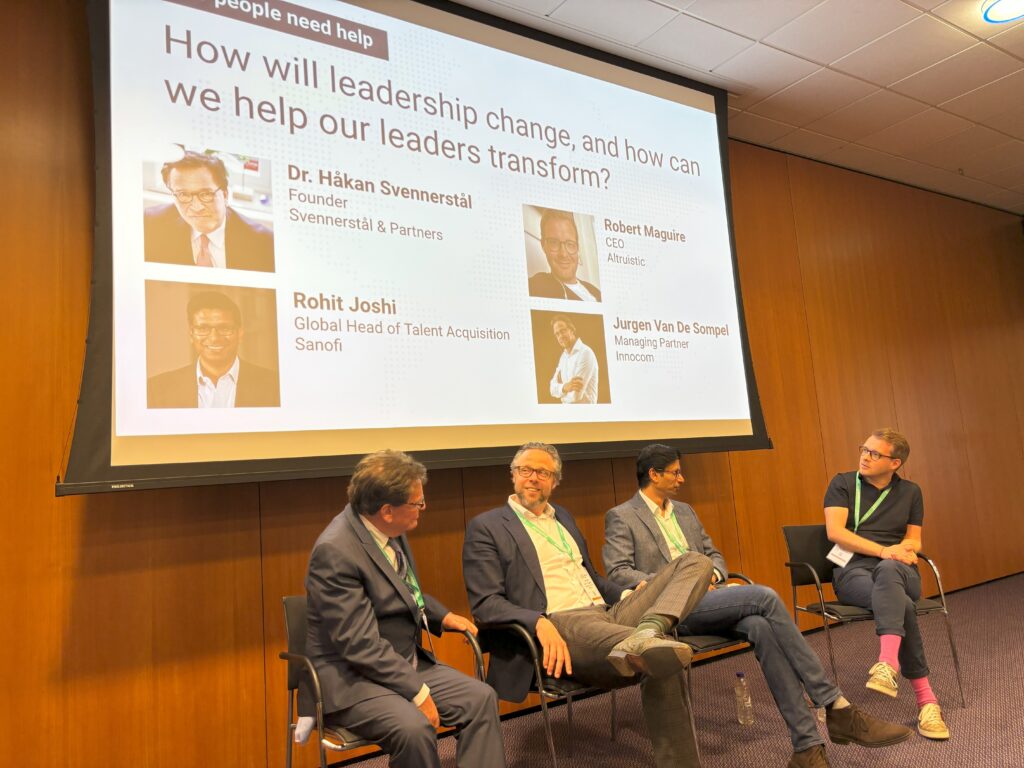
A whopping 70 percent of large-scale transformation programmes fail to reach their stated objectives. The common central reason for failure is a lack of belief that a transformation is really possible. However, with the right mindset, a leader can align objectives and beliefs, and set a secure path for successful transformation. Too often there is an assumption that achieving the essential mindset shift is as easy as turning on a light switch. Unfortunately, this is not the case. Another approach is to dive into the ‘project’ in the hope that the mind will catch-up along the way. Neither options are effective. So what is the right approach?
New mindsets are made in the creative and less efficient part of the brain and we have protective mechanisms in place to keep us in our current energy efficient mindsets. Once we have left our primary development years behind i.e. childhood, we subconsciously look for efficient ways to do what we know best. Therefore, when we are in a familiar environment, doing familiar work, it takes an intentional hack and a concerted ‘rewire’ to create, establish, and maintain a new mindset.
Rewiring is possible and can be achieved through an eight-step process using the acronym MINDSETS, that reviews and renews mindsets in support of transformational growth.
1. My: Acknowledge individual responsibility for current mindset
An individual’s mind belongs to them. It is their choice how they use it, and it’s theirs to manage. We can be intentional about what we choose to feed into our mind and how we choose to think about these inputs. This is about noticing and assessing the various inputs influencing thinking, to determine if they are helpful or not. For Sam, a leader who wanted to breakthrough an obstacle and achieve new growth, this meant intentionally reviewing key input influencers and proactively finding relevant material to inspire thinking inline with the growth goal.
2. Image: Pay attention to the mental images
Our minds think in images; they picture what we think about, including images of past events and imaginations of future scenarios. We know this scientifically through thousands of studies and we know it practically e.g. if someone says “desk”, we picture a desk. For Sam looking for breakthrough, the automatic mind-imagery was predominantly negative, presenting images of the new growth as daunting and difficult.
3. Narrative: Tune into the inner dialogue
Our inner dialogue runs in parallel with our mind-imagery, articulating and commenting on images recalled or created e.g. when we picture a ‘desk’ an internal desk dialogue will commence as the image is produced. Working with Sam to achieve a new breakthrough, the automatic mind-narrative was a combination of helpful and unhelpful script, rather than being intentional and focused on supporting the goal. The negative narrative was informed by past experiences of unsuccessful breakthrough attempts and current low energy levels, giving the perception that growth would be difficult and require additional energy.
4. Domain: Review images and narrative to determine the default emotional environment
Our mind images and narrative combine to create an emotional domain. Like an internet domain, our ‘mind-domains’ behave in accordance with the inputs. The inputs determine the default environment. Good inputs will produce a good environment.
The domain environment provides a point-in-time view of our mindset. If the domain is ‘clean’ i.e. in support of our goals, no action is necessary. However, if the domain is not what we need it to be, we can take action. In Sam’s case, the default position was mixed with some positive thoughts and some thoughts of self-doubt, resulting in a confused and unhelpful domain.
5. Scenes: Create new sets of images and narrative to realise new futures
Intentionally imagining something as we want it to be, using visualisation, we can create a finished-state scene of a particular situation or goal. By incorporating multiple disciplines e.g. writing, drawing, building, talking and listening etc. we create the new scene to be as real as possible to engage with it as fully as possible. In Sam’s pursuing breakthrough growth, this new scene created a clear and detailed picture of the completed goal, presenting new intentional positive imagery and an accompanying positive narrative.
6. Emotions: Engage with the newly created emotions
Having created a new scene, we need to engage with the emotions of the scene e.g. as we picture the accomplishment of a successful outcome, we enter into those emotions to feel what it would be like. In the example of Sam in pursuit of a new breakthrough, this meant stepping into the scene and engaging with feelings of being elated, energised, proud, inspired and confident. The realisation of emotion brings the new scene to life, fuelling the possibility of a new domain.
7. Truth: Believe in the new scene
Combining these emotions and the new scene as something to be believed in, we establish it as new mindset truth. Unlike the default image narrative, which is automatically fed by the subconscious, new mindset thoughts are purposeful and positive, elevated to the new scene’s emotions. This is achieved by creating new truth statements that articulate the new scene and capture their emotions as present tense established reality. Practiced persistently (typically around 60 days) these new intentional mindset thoughts re-inform the automatic images, narrative, and domain, to become the default truth. This is expressed as an ‘I am’ statement, which in Sam’s case was, “I am a resilient leader, I overcome obstacles to achieve breakthrough, I am successful”. Flowing out of the new scene and charged with positive emotions, this new truth statement creates belief.
8. Story: Proclaim the new mindset through story
This final step builds on the new truth to accelerate and deepen impact, establishing the story we tell ourselves and others as we proclaim the new mindset. Our mindsets can be voice activated; including with our own words. As we understand our responsibility in managing our inputs (i.e. my mind) we enforce the new mindsets by managing our outputs i.e. our speech. Through regular articulation of the new scene truth, belief is established. In the example of Sam, this included a frequent proclamation to self, which became intentional and an essential part of the story. This resulted in a breakthrough, going from an undercurrent of frustration, to achieving the growth ambition.
Through learning and practicing this step-by-step approach, transformation is possible. New mindsets can be established to create belief, that essential ingredient for success. The process holds true for individual’s and teams; embracing and practicing mindset renewal, providing a critical key to unlock breakthrough to successful transformation.






